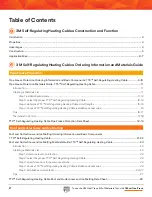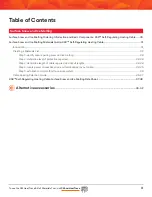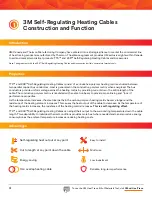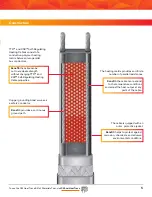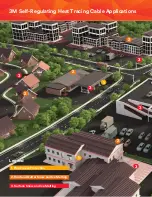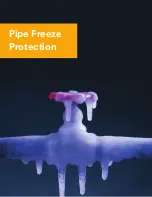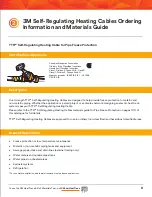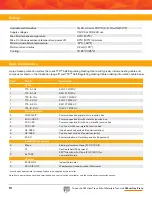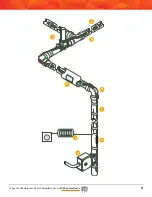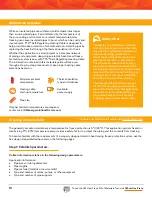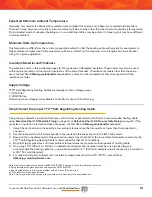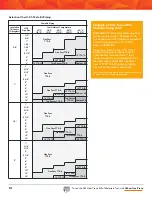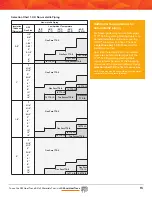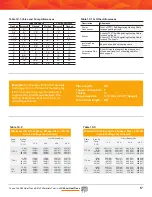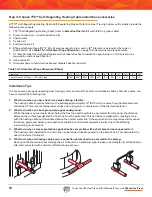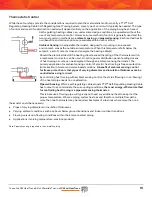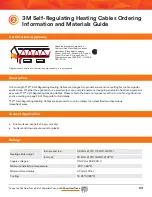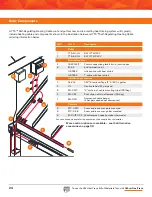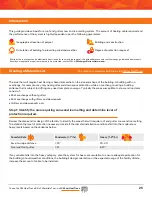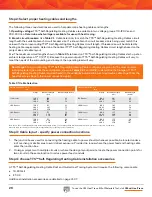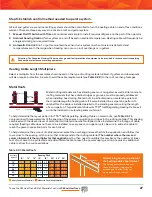
To use the 3M Heat Trace Bill of Materials Tool, visit
3M.ca/HeatTrace
12
Application overview
Creating a materials list
Safety first.
The safety and performance of electric
heat tracing depends on how the cable
was selected, installed and maintained.
Improper handling, installation or
maintenance of the cable can result in
electrical shock, fire or cable failure.
The information, instructions, testing
procedures and warnings addressed in
this guide are important. To minimize these
risks, read this guide prior to starting any
heating cable or component installation
and follow the instructions carefully.
The Canadian Electrical Code requires
that all heat tracing applications utilize
ground-fault protection. This protection
requirement can be achieved through
ground-fault branch circuit breakers
supplying power to the heating cable.
Step 1: Establish parameters.
While an insulated pipe can withstand cold temperatures longer
than an uninsulated pipe, it’s still affected by the temperature of
the surrounding environment. An ambient temperature below
freezing can cause insulated pipes to burst, which can be costly and
inconvenient. TTS™ Self-Regulating Heating Cable is designed to
help provide freeze protection of metallic and non-metallic pipes by
replacing the heat lost through the thermal insulation into the air.
Whether the application is a small project or a complex network
of piping and equipment, designing an electric heat-traced freeze
protection system is easy with TTS™ Self-Regulating Heating Cable.
The information contained in this materials guide will take you
through a step-by-step procedure to make proper heating cable
selections based on:
The generally accepted maintenance temperature for freeze protection is 5°C (40°F). This application guide is based on
maintaining 5°C (40°F) temperature and provides a safety factor to protect the piping and the contents from freezing.
To become familiar with the requirements of a properly designed electric heat tracing freeze protection system, use the
five design steps detailed here and on the following pages.
Minimum ambient
temperature
Heating cable
start-up temperature
Pipe size
If higher maintain temperatures are required,
contact us at
Collect information relative to the following design parameters:
Application Information:
• Pipe sizes or tubing diameters
• Pipe lengths
•
Pipe material (metallic or non-metallic)
• Type and number of valves, pumps, or other equipment
• Type and number of pipe supports
Thermal insulation
type and thickness
Available
power supply
To create your materials list online, visit 3M.ca/HeatTrace.
Summary of Contents for TTS-5-1-OJ
Page 7: ...To use the 3M Heat Trace Bill of Materials Tool visit 3M ca HeatTrace 7 2 2 2 2 2 3 3 3 3...
Page 8: ...To use the 3M Heat Trace Bill of Materials Tool visit 3M ca HeatTrace 8 Pipe Freeze Protection...
Page 11: ...To use the 3M Heat Trace Bill of Materials Tool visit 3M ca HeatTrace 11 4 5 6 7 9 1 8 3 2...


